Battery electric buses come with a host of benefits to the environment, users and operators alike. If you are considering converting all or part of your bus fleet to battery electric buses, here are a few things you should know.
BEB Benefits
Battery Electric Buses are considered zero emission vehicles since they have no exhaust emissions. The shift to electric vehicles and BEB’s in particular will help to reduce green house gas emission in the United States. In 2019, the transportation sector was the largest contributor to greenhouse gases.
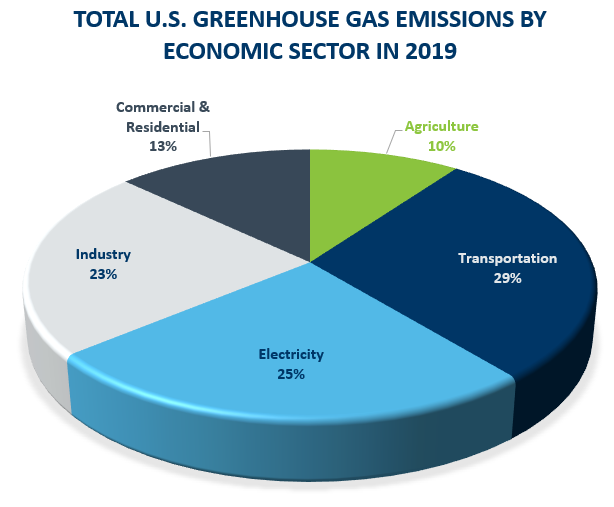
Battery electric vehicles are also more efficient. A 2016 study by the California Fuel Cell Partnership stated that battery electric vehicles convert 59% – 62% of grid energy to the wheels of the vehicle. Combustion vehicles convert 17% – 21% of gasoline energy to power at the wheels.
A study by NREL (National Renewable Energy Labs) evaluated BEB’s versus compressed natural gas buses and determined that BEB’s obtained between 16 – 18 mpDGE (Miles per diesel gallon equivalent) where the CNG bus obtained a little over 4 mpDGE.
Battery electric vehicles are also quieter due to the use of electric drive motors as opposed to combustion engines. In fact, battery electric vehicles are so quiet that most states are requiring noise generators be added to the vehicle so that pedestrians can hear them coming.
BEB’s have overall less maintenance costs per mile than their diesel equivalents. This is due to the limited number of moving parts on a BEB as compared to a diesel bus.
BEB’s have caught on, and many transit agencies have pilot projects on-going. A few are even moving from the pilot project stage to full deployment of electric buses.
Utility Costs
Regardless of whether you are planning on charging electric buses at the depot or on-route, it is important to understand the rates available from the electric utility servicing the area, as well as the impact of electric buses on the utility costs. Utility rates are broken down into two components: The energy rate – or the cost of the energy consumed over a period of time, usually in kilowatt hours over a billing period; and the demand rate – or the maximum amount of power used at any one time, usually in kW and typically the highest kW used during the billing period. Many utilities use a ratchet function on their demand charges, meaning the highest kW used during a period sets the demand charge for multiple periods, up to and including a full year.
The other critical component is the ability of the electric utility to supply the anticipated power needs as the facility grows. Most utility infrastructure is older and aging. Do not expect a local utility to be able to provide power for 150 electric buses without some significant infrastructure upgrades on the part of the utility. Infrastructure upgrades are typically charged to the customer requesting the upgrades and therefore potentially our client. It is important to get the utility on-board as early as possible in the design process, even at the project immersion or pre-design stage, to make sure that the overall design takes into consideration potential growth scenarios with utility services and costs.
Energy Costs – The energy provided by the local utility can be competitively supplied in some states (deregulated states). In a deregulated state, the local utility can provide the energy if the customer desires, or the customer can shop around for a competitive energy supplier. If the customer does not choose a supplier, then the local utility usually becomes the default or supplier of last resort for the energy supplied to the customer. In a regulated state, the local utility is the only supplier of the electric energy for the customer. Energy costs are usually competitive and market driven.
Demand Costs – Demand charges are levied by the local utility and are based on rates approved by the local utility commission. These rates allow the utility to recover costs for the distribution networks used to supply the customers. Demand charges may be broken down into on-peak, shoulder peak, and off-peak periods. A utility that has on-peak demand charges typically has large energy usage during the daytime hours and charges a higher demand rate for usage at that time. Shoulder-peak and off-peak rates are typically much lower costs and are used to entice customers to shift their load to shoulder or off-peak periods.
Even connecting one bus to a 125 kW charger during an on-peak period can reset the on-peak demand charges for an entire year, depending on the utility rate. Battery electric buses are usually charged during the off-peak period to minimize the impacts on demand charges and utility costs. However, given the range of today’s battery systems on BEB’s, it may not be feasible to only charge during off-peak periods. This can significantly impact the overall costs of BEB operations.
A thorough review of available rate structures and BEB route information is necessary to adequately determine the impacts of charging costs to the project. Most utilities are exploring electric charging rates which are aimed at eliminating demand charges. The status of these rates varies by region.
Bus Depot Charging vs On-Route Charging – BEB’s may be charged in the depot overnight or may utilize on-route charging, or a combination thereof. Each method of charging has its own advantages and disadvantages. The following is a brief description of both methods:
Depot Charging – Depot charging is the most popular method for charging BEB’s. This requires installation of chargers (normally one per bus with today’s technology) and dispensers. Some of the advantages of Depot charging are:
- Depot charging has a lower up-front capital cost (usually) per bus than other methods of charging.
- Depot charging also allows for charging during shoulder and off-peak demand rate times, reducing the charging costs.
- Depot charging allows for the use of smaller chargers, 60 kW or 125 kW, as opposed to fast chargers which are usually 500 kW chargers, further decreasing charging costs.
- Depot charging is usually located on the property of the transit agency, not requiring negotiations or leases of property around the service area.
Some of the disadvantages of Depot charging are:
- Depot charging requires larger battery packs than buses that are charged on-route, to be able to complete their routes.
- Larger battery packs result in heavier buses, with some of the newer long distance buses not meeting Federal requirements for Gross Vehicle Weights on the highways.
- The larger the fleet of BEB’s, the larger the power demand at the depot, which may require a significant investment in utility infrastructure by the local utility and the transit agency.
- Transit agencies are used to having the ability to put any bus on any route. With a BEB bus charged only at the depot, this may not be possible. Consideration of the range of the BEB needs to be considered when placing a bus on a route. This may necessitate BEB routes and non-BEB routes.
On-Route Charging – On-route charging requires the installation of fast chargers along the routes of the BEB’s at strategic locations to provide a quick charge to the bus while passengers are loading and un-loading. Typical on-route chargers have the bus located at the charger for roughly 5 – 10 minutes. The longer the bus can stay at the charger, the better the charge.
Some of the advantages of on-route charging are:
- On-route charging allows for smaller batteries on the BEB and enables the BEB to cover longer routes than a depot only charging system.
- Any BEB can be used on any route, provided adequate on-route charging is in place along the routes.
Some of the disadvantages of on-route charging are:
- On-route charging is expensive – a typical installation of one 500 kW charger and related infrastructure can be as high as $1,000,000 in an urban setting.
- Placing fast charging stations in a tight urban area can be difficult due to space and property constraints.
- On-route charging is the most expensive way to charge a BEB if the utility has demand charges and does not have an electric vehicle charging rate.
- On-route charging requires additional equipment on the bus and at the charging location that needs routine maintenance. This can be more difficult in colder climates.
Impacts on the Depot Electrical Infrastructure
The addition of BEB’s into the depot will have a significant impact on the electrical distribution system of the depot. In a new design, the electrical infrastructure can be configured to allow for growth in the event BEB’s are added. In existing depots, location of the necessary electrical infrastructure (switchgear and transformers) can be a challenge and may be the limiting factor to the addition of BEB’s. Coordination with the local utility is critical and a realistic plan for a BEB roll-out is necessary.
As an example, Greater Bridgeport Transit wanted to add BEB’s to their fleet. The pre BEB electrical demand at the depot was 115 kW. GBT wanted to add 11 BEB’s. The added demand of 1 BEB is 144 kW. The addition of 11 BEB’s increased the demand at GBT from 115 kW to 792 kW with the limitation of only charging half of the buses at any one time during the off-peak and shoulder periods. That is 6+ times greater electrical demand, and required the replacement of the whole electrical distribution system and an upgrade of the utility transformers that feed the bus garage.
Battery Chargers – locations
Today’s battery chargers require that the charger be located within ≅ 400’ of the dispenser. The dispenser, which connects to the bus, can be no greater than 27’ from the bus. This is today’s technology, and may change in the future. This does present some problems with locating chargers and dispensers in the bus depot. This is of concern in garages where there are multiple stacking lanes in the bus storage area with no access between the buses.
Whether you are adding BEB’s in the current design, or if it is a future possibility, thought needs to be given as to how the chargers will be located and where the dispenser will be located. This must include the length of the buses under consideration, the possible location of the bus while charging, the location of emergency stop push buttons (Charger and dispenser), bus charging port locations, etc.
Battery Chargers – Heat
A 125 kW battery charger gives off a lot of heat. The addition of many battery chargers to a bus storage depot can have a significant impact on the bus storage facility ventilation system. A review of the roll-out of BEB’s and their impact on building ventilation needs to be considered in any design, new or retrofit.
Dispensers
There are numerous types of chargers currently available and new technologies are quickly entering the market. The most common charger/dispenser combination is a charger with a remote dispenser as pictured below:
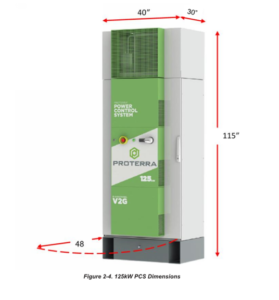
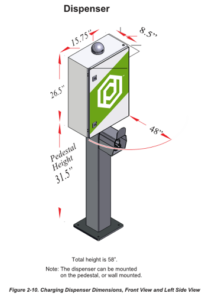
Other types include inductive chargers which utilize a mat and an inductive pickup located under the bus to allow for an inductive charge. This type can be used in both on-route as well as depot 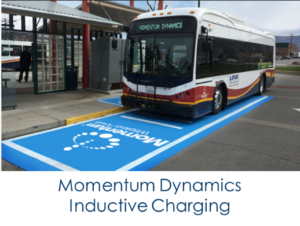 charging but is more expensive and is just entering the market.
charging but is more expensive and is just entering the market.
Other Considerations
Bus lifts – most bus lifts can accommodate BEB’s. However, BEB’s are heavier than their diesel counterparts and a quick check of the lift capability is warranted to make sure that when BEB’s are added the existing bus lifts can accommodate the added weight of the batteries.
Fire Suppression Systems – The current fire and building codes do not address the addition of BEB’s to a bus storage or maintenance facility. This is a case where the codes just haven’t kept pace with the technology and industry. Most BEB’s utilize Lithium Ion batteries. Lithium Ion batteries have been known to have fire problems and have been banned from airline cargo due to their fire characteristics.
Lithium Ion batteries, if they begin to operate outside their normal operating range, can catch fire. The problem with these batteries is that they develop the fuel and the oxygen necessary to continue to fuel the fire. Lithium Ion batteries can progress into what is called thermal runaway and produce a very hot fire that is difficult to put out. Once out, these batteries have been known to self-ignite again, hours or even days after the initial fire.
Lithium Ion battery packs used in BEB’s contain a battery management system that helps to maintain the battery in a safe condition, both from a charge/discharge perspective as well as a temperature perspective. The battery packs are also assembled, by most manufacturers, in packs/cases that are designed to resist the spread of a BEB fire.
Conversations with the local AHJ and/or State AHJ’s early on to identify what the fire suppression system should be is strongly advised. Current studies by the insurance industry and battery manufacturers are recommending significant amounts of water be used to put out a battery fire. Guides on what this means are not currently available but amounts in the 0.7 GPM/SF are being considered.
The other issue is what areas need this level of protection. Some believe that the risk of a battery fire is limited to when the bus is charging or discharging the battery and therefore would be limited to on-route and while charging in the depot. Others have suggested that the entire depot would need this level of protection given that the bus could be located anywhere in the depot when a fire breaks out.
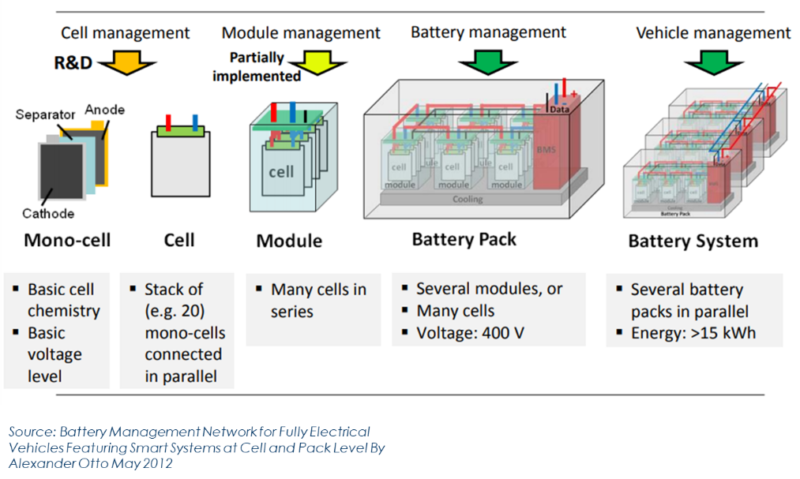
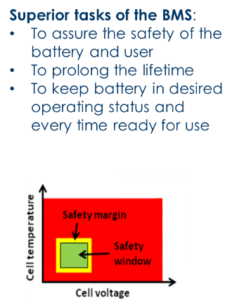
Resiliency – One answer to the electrical distribution system problem has always been to add solar, battery or fuel cell energy to help with the problem. There is a role for solar with BEB’s, however we must be careful. A 1 mW solar array may be able to provide 850 kW of power for electric buses. That is roughly enough power to charge 5 BEB’s over a 4 hour period. The addition of battery storage enables the storage of solar, and provides flexibility regarding when the solar power can be used. However, solar and battery storage by themselves are not enough to power an entire fleet of BEB’s with today’s technology.
Solar can be used to manage peak demands and should be considered in all BEB projects. The larger the fleet of BEB’s at a transit facility, the more critical the power supply becomes. In most cases, the utility feeds should be designed to provide 100% of the power necessary to charge the BEB fleet, with other options such as solar be used for a level of resiliency, optionality and peak shaving.
Fuel cells have been used and the issue with the current technology of fuel cells is their reliability. Today’s fuel cells do not have a strong track record when it comes to reliability and numerous fuel cells operate at half capacity due to cell issues. Fuel cells can be considered in the mix but should not be used as a reliable source of power to charge BEB’s, at least not with today’s technologies.
Real Estate – Although this is not a major concern with new designs, real estate around the depot is a premium and all BEB infrastructure options put a strain on real estate. The larger the BEB fleet, the larger the power infrastructure will be. This includes utility transformers, power feeds, switchgear and switchgear rooms, chargers and dispensers. This will also include space for back-up generators, fuel cells, solar panels and battery arrays as well as the interconnections to this equipment. Depending on the fire suppression system resolution, the need for fire pumps and associated equipment will also put a strain on real estate.
Written by: John P. Havrilla, PE, Energy Services, Senior Associate Principal
